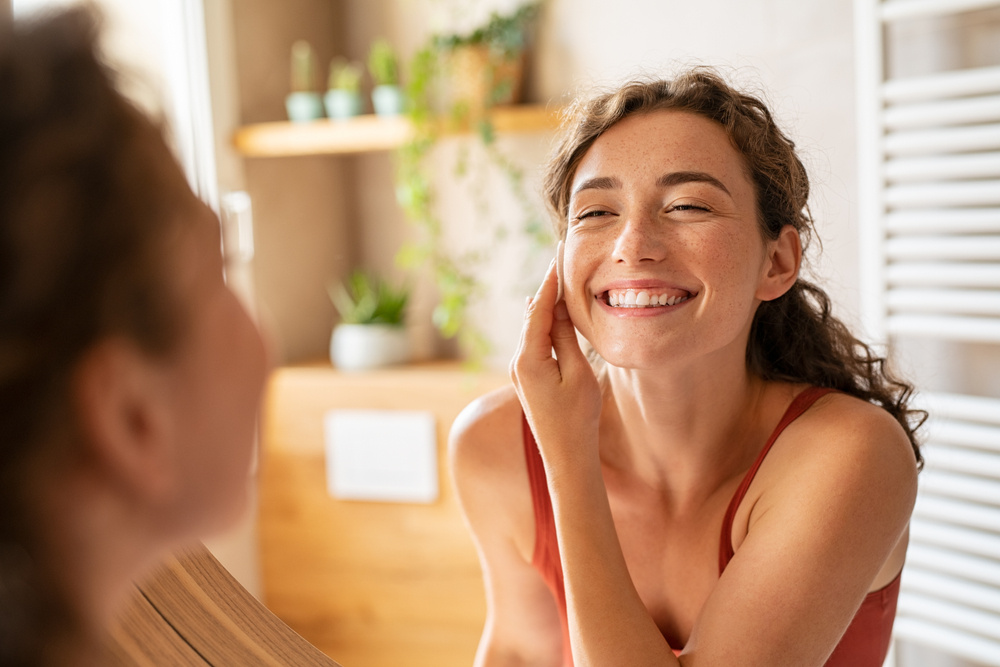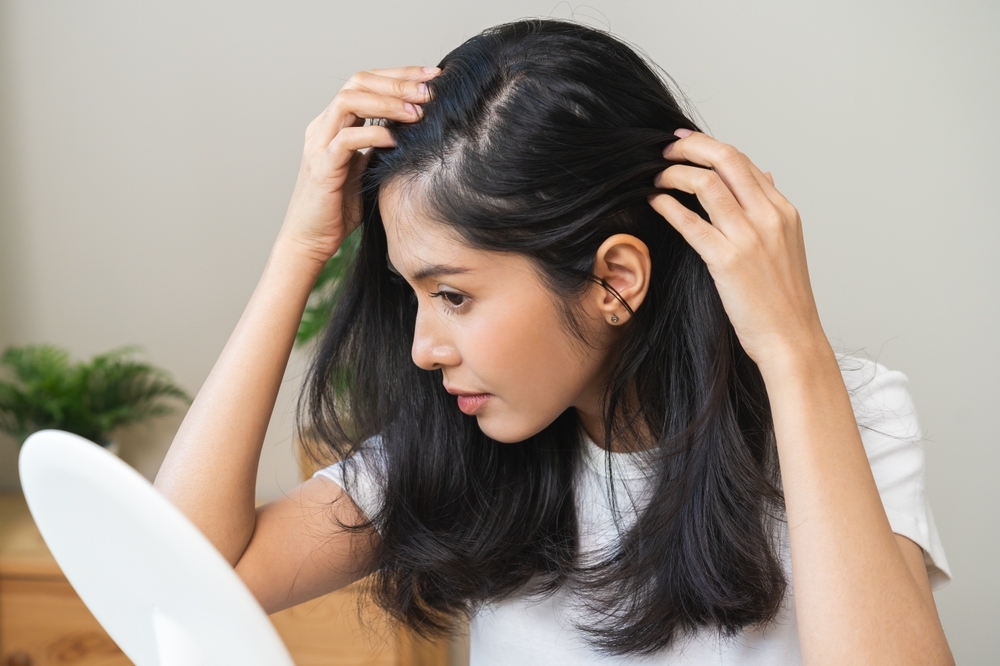Depending on when you grew up, the smell of Noxzema or Sea Breeze may bring back vivid memories of the painful battle against acne.
It turns out, we weren’t alone. The American Academy of Dermatology estimates acne to be the most common skin condition in the U.S., affecting upwards of 50 million people. And not all of those are teenagers. It can happen at any age, and is being seen at an increasing rate in women.
What is it, and what can you do about it?
The ABCs of Acne
Acne can appear anywhere on the body with pores (which is everywhere except the palms of your hands and the soles of your feet). The most common causes are genetics, stress, medications, and hormones. Contrary to the myths that still circulate, acne doesn’t come from eating greasy food (although what we eat definitely relates to our overall health, including our skin).
Acne happens when inflammation and increased oil production (typically from the hormonal activity during puberty) clog the pores. With oil trapped inside the pore, bacteria thrive and reproduce.
Acne is classified into inflammatory and non-inflammatory (although inflammation is linked to all acne).
- Think of pressure building up until it bursts, like overfilling a water balloon. When that happens with clogged pores, the pressure breaks the wall of the pore, letting the contents overflow into the surrounding skin. This is inflammatory acne (called papules, pustules, cysts, and nodules). Unfortunately, the immune system sees this as an attack, and it fights back against the infection. The white blood cells – which are there to help – cause the acne to be red and painful.
- Non-inflammatory acne is whiteheads and blackheads (the medical term is comedone). These happen when the oil that’s supposed to come to the surface gets stuck inside. Acne bacteria (which loves skin oil) then multiply rapidly. The oil and bacteria build up and turn into visible lesions, more familiarly known as whiteheads or blackheads.
Treatment for Acne: Minimize the “Waves” of Outbreaks
If you try to attack the oil, you can accidentally dry out the skin. In its own defense, the skin will produce more oil. (That’s why astringents aren’t a good idea, and neither are harsh abrasive cleaners.)
If you have severe acne, dermatologists have a range of treatment options:
- Blue Light Photodynamic Therapy: This is a noninvasive procedure where doctors apply a topical to the skin (called Levulan), which increases the skin’s sensitivity to light. After about 30 minutes, the skin is exposed to blue light, which kills the damaged skin cells. This same therapy is useful for sun damage, and pre-cancerous spots (Actinic Keratosis).
- Vitamin A: Applied topically, Vitamin A helps decrease clogging of pores to stop the cycle. Every treatment is individualized, and some can include other topical medications and antibiotics. In some cases, Vitamin A may be prescribed orally. (It’s important to know there can be side effects, which is why this is done only by prescription and under your doctor’s care.)
As Dr. Ed Becker, founder of Golden State Dermatology, says in a video on our website, acne comes in waves, like the ocean. “Our goal is to create lousy surfing conditions,” he said, meaning – very few waves. While you can’t eliminate acne completely, the goal is to make each wave less severe, and to make the waves themselves less frequent.
Everyday Care: Emphasis on Gentle
The key word for daily skin care if you have acne or even the occasional breakout is “gentle.” From cleansers to moisturizers, treat acne-prone skin with sensitivity. In any skin care or make-up product, avoid: fragrances, phthalates, formaldehyde, and alcohol.
Cleanse: The first step is to cleanse without drying or aggravating the skin (avoid the above, plus a common cleaning ingredient, sodium lauryl sulfate). Also, don’t wash too often because cleansing strips oil from the skin. The body is always looking for balance, so if you deplete too much oil, it will respond by producing more!
Exfoliate: The days of scrubs with crushed shells are gone! Again, treat your skin like it’s made of delicate ceramic. You do want to exfoliate to remove dead skin cells, but you don’t want to scrub the skin. Opt for chemical exfoliation rather than physical, like products with alpha hydroxy acids, beta hydroxy acids or poly hydroxy acids.
Moisturize: Back to the point above, it may seem odd to moisturize oily skin, but you want to make sure your skin has enough of the right kind of moisture so it doesn’t produce more of its own. Look for products that say “non-comedogenic” and are fragrance-free and oil-free.
Protect: Don’t skip sunscreen! Getting a sunburn on acne is painful and causes even more inflammation. Plus, the sun does other damage. Look for broad spectrum sunscreen that protects against both UVA and UVB and an SPF of at least 45. Wear it every time you go outside.
For Spot Treatment at Home
Sometimes you need a spot treatment for a few pimples that pop up at the worst moment. Or you may only get a few pimples here and there, versus acne.
When choosing a product for acne, look for these ingredients:
Benzoyl peroxide: This kills bacteria and removes dead skill cells. It’s fairly drying, so use it with caution. And as you can guess from the name, it will discolor fabric and even lighten hair (temporarily), so apply carefully.
Salicylic acid: This is an exfoliant that helps unclog pores.
AHA: Alpha hydroxy acids like glycolic acid and lactic acid can both remove dead skin cells to prevent clogging, and also help improve overall skin appearance.
Adapalene: This is a retinoid, like Vitamin A. It works to prevent new breakouts as well as unclog pores. It can be purchased at lower strength over-the-counter.
Sulfur: This sounds fairly severe, but it’s another agent to remove dead skin cells and reduce oil.
Topical retinoid: You can buy Vitamin-A based products over-the-counter at lower potencies than those by prescription from a dermatologist.
Azelaic acid: This has both antibacterial and anti-inflammatory properties, as well as working to prevent the buildup of keratin, a type of protein that can clog pores. It can help with post-inflammatory hyperpigmentation, otherwise known as dark spots, which stay behind after the acne is gone.
Tea tree oil: This essential oil can be as effective as benzoyl peroxide but may take longer to work.
Everyone’s skin is different, and given that acne can be caused by hormonal fluctuations or stress, what works well at one point in your life may not work at another. Some of these protects can be irritating to the skin, or drying. Start with the most mild product you can tolerate, and as always, talk to a dermatologist to get recommendations tailor-made for you.
Bonus: Tips to Keep Acne Away
While you can’t completely prevent acne, you can take steps to minimize it.
- Don’t touch your face. The oil from your hands will just add to the oil on your face.
- Stay out of the sun. Sun can make acne worse. Plus, some acne treatments will make your skin more sensitive.
- Routine is your friend. If you’re undergoing treatment, stick with it. Acne comes and goes. Don’t give up on treatment if you see a recurrence. Know that maintaining your treatment should mean fewer and less severe break-outs.







